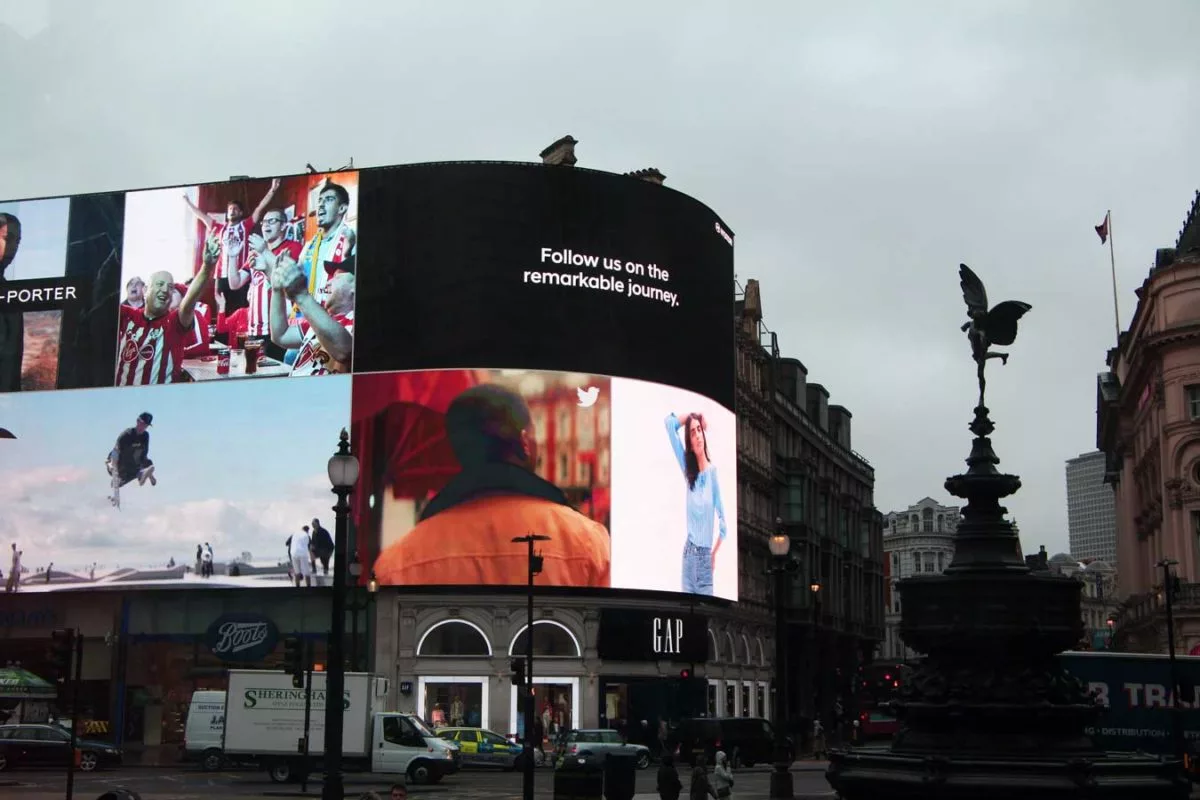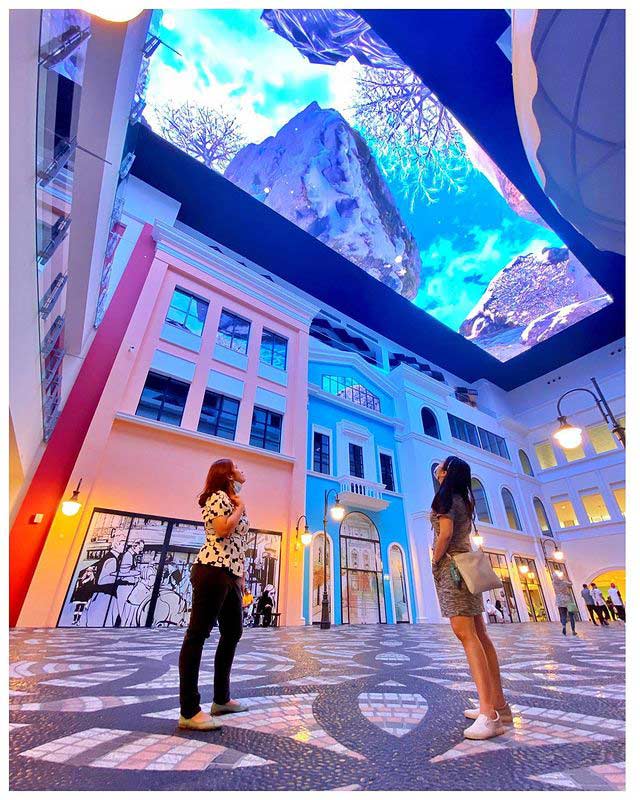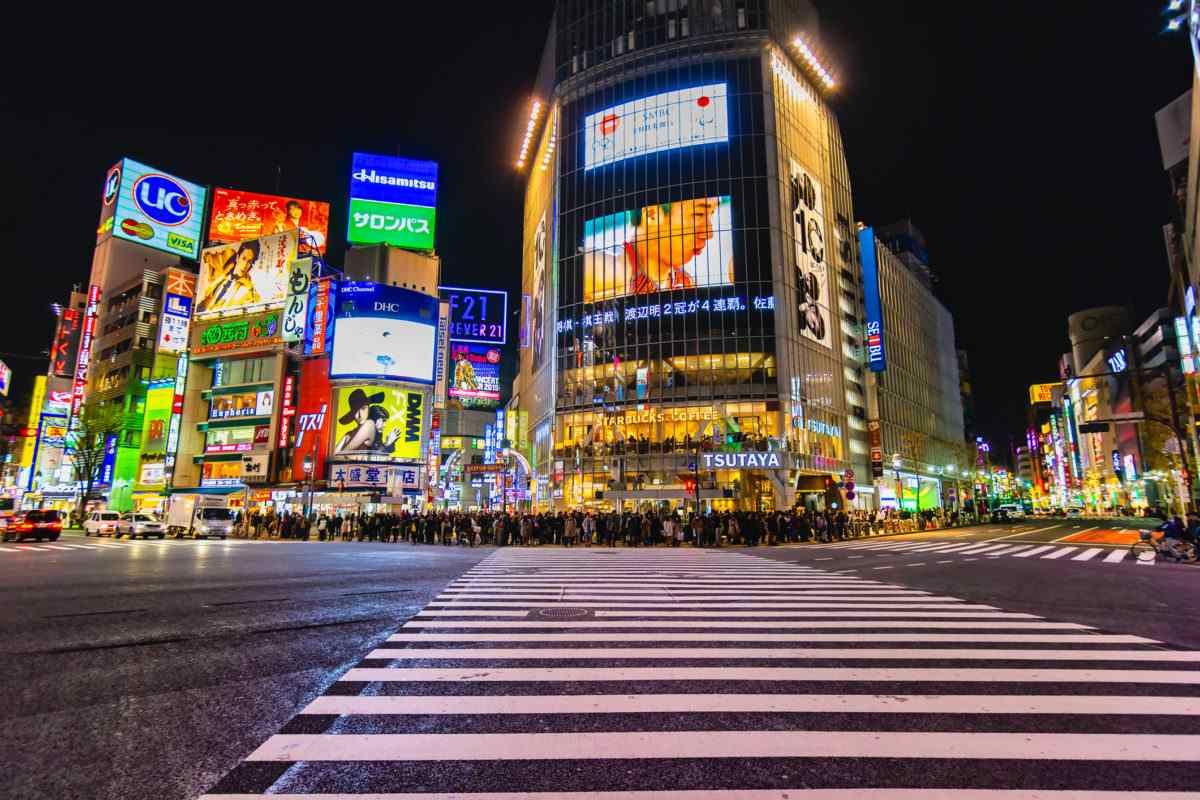What is LED Signage board?
LED digital display signage utilize an array of light-emitting diodes as pixels to create a flat panel video display. Their brightness enables outdoor usage, making them suitable for store signs and billboards visible even in sunlight. In recent years, LED displays have found widespread application in destination signs on public transport vehicles and variable-message signs on highways. Apart from visual display, LED displays can also provide general illumination, such as in stage lighting or for decorative purposes. They offer higher contrast ratios compared to LCDs and can be manufactured in larger sizes. When selecting an LED screen for digital signage, ensure compatibility with your digital signage software.
What are the main use cases for LED displays?
LED digital display signage is often used for advertising and marketing purposes, as they are highly visible and can be easily seen from a distance. They are also commonly used for public information purposes, such as in destination signs on buses or trains, or in variable-message signs on highways. In addition, LED displays can be used for general illumination, stage lighting, or other decorative purposes.

What are the advantages of LED Signage board displays?
LED displays have several advantages over LCDs, including higher contrast ratios, wider viewing angles, and faster response times. In addition, they can be produced in much larger sizes than LCDs. However, they also require more power and generate more heat.
What are the disadvantages of LED displays?
The main disadvantage of LED displays is that they require more power than LCDs and generate more heat. In addition, they can be more expensive to produce than LCDs.
What are the future prospects for LED signage boards?
LED displays are becoming increasingly popular as they offer many advantages over LCDs. In addition, they are becoming more affordable as technology improves and production costs decrease. The future prospects for LED displays are very positive.
Why use LED signage?
Using LED digital signage increases visibility, benefiting businesses. LED displays have a greater impact compared to LCDs. They provide high-quality visuals, brighter images, and higher contrast than LCD displays. Additionally, LED displays are energy-efficient and affordable, offering a high-end solution at a budget-friendly price.
By utilizing LED displays, businesses can offer an amazing experience, stand out, and make a significant impact on their audience. LED displays easily grab customers’ attention as they walk past them, creating a memorable “wow effect.” The captivating visuals and videos on LED screens attract consumers, enticing them to read or stop in front of the display. Businesses can leverage LED signage to attract customers to their stores by showcasing promotions, for instance. LED signage can be used indoors or outdoors, and major brands offer a wide range of LED screens.
What is the difference between LED and LCD screens?
The main difference between an LED and LCD monitor comes from the screen technology used to create the picture displayed.
LED (light emitting diode) are more energy-efficient, thinner, have shorter response times, better contrast, and have a longer lifespan compared to LCD.
LED displays allow to the creation of seamless video walls because they don’t need frames around the screen like LCD.
When to use an LED screen over an LCD or other?
LED displays offer many advantages over LCDs, including higher contrast ratios, wider viewing angles, and faster response times. In addition, they can be produced in much larger sizes than LCDs. However, they also require more power and generate more heat. As such, LED displays are best suited for applications where power consumption and heat generation are not major concerns, such as in advertising and marketing applications.

What is the cost of an LED signage board?
The cost of an LED screen depends on a number of factors, including the size, resolution, and features of the display. Generally speaking, LED displays are more expensive than LCDs. However, the price difference has been decreasing as technology improves and production costs decrease.
Some of the factors that affect the price of an LED screen include:
- Size: The larger the display, the more expensive it will be.
- Resolution: Higher-resolution displays are more expensive than lower-resolution displays.
- Features: Displays with features such as high refresh rates, wide color gamut, and local dimming will be more expensive than displays without these features.
What are some common issues with LED displays?
Common issues with LED displays include image retention, screen flickering, and image ghosting. These issues can usually be resolved by adjusting the settings on the screen or by replacing the display.
How can I troubleshoot common issues with LED displays?
If you are experiencing common issues with LED displays, such as image retention, screen flickering, or image ghosting, you can try adjusting the settings on the screen or replacing the display.
How can LED displays be used for video walls?
LED video walls are becoming increasingly popular as they offer many advantages over LCDs, including higher contrast ratios, wider viewing angles, and faster response times. In addition, they can be produced in much larger sizes than LCDs. However, they also require more power and generate more heat. As such, LED video walls are best suited for applications where image quality is paramount and size is a key consideration.
Some of the most popular applications for LED video walls include:
- Outdoor advertising and digital signage
- Control rooms and command centers
- Live events and concert venues
- Sports arenas and stadiums
- Shopping malls and retail stores
- Transportation hubs
LED displays can be used to create very large video walls with seamless images. This is because they are made up of smaller modules that can be put together to create a larger display. LCD video walls also come in modular form, but the bezels (the borders around each screen) are much thicker, which results in a less seamless overall image.

How have LED displays changed over the last several years?
LED displays have changed significantly over the last several years. The most notable changes include the following:
- The introduction of direct view LED displays, which are now the most popular type of LED display.
- The increase in resolution and decrease in the price of LED displays
- The improvement in image quality, including higher contrast ratios and faster response times.
- The increase in size options, with some displays are now available in very large sizes.
- The introduction of new features, such as curved and transparent displays.
How often do LED displays need to be replaced?
LED displays typically have a lifespan of 100,000 hours. However, the brightness of the screen will decrease over time. As such, most people replace their LED displays every 5-10 years.
Optimize Your Digital Signage Setup: Navori Stix 3700 Hardware Recommendations
For best results with the Navori Stix 3700, pair it with hardware that matches its capabilities. This digital signage player is made for smooth playback of high-resolution content on LED displays. To make the most of its features, connect it to quality LED display screens and video wall controllers.
When choosing LED displays, go for ones with bright colors, strong contrast, and wide viewing angles to make your content stand out. Find LED displays that work seamlessly with the Navori Stix 3700 for smooth communication and playback.
Also, get a reliable video wall controller that works well with the Navori Stix 3700 to create impressive video walls. Look for a controller that has features like bezel compensation and pixel-level calibration for consistent display quality.
To boost the Navori Stix 3700’s performance, use SSD storage for quicker content loading and smoother playback. Make sure to have good cooling solutions in place to prevent overheating and ensure the player’s reliability over time.
By picking and connecting hardware that matches the Navori Stix 3700’s capabilities, you can create captivating digital signage experiences for your audience.
Conclusions
LED displays offer many advantages over LCDs, including higher contrast ratios, wider viewing angles, and lower power consumption. However, they are typically more expensive than LCDs. LED displays have a lifespan of 100,000 hours but the brightness of the screen will decrease over time. As such, most people replace their LED displays every 5-10 years. If you are experiencing common issues with LED displays, such as image retention, screen flickering, or image ghosting, you can usually resolve these issues by adjusting the settings on the screen or by replacing the display.
About Navori Labs
Navori Labs, a Swiss software innovator, delivers premium digital signage and AI-driven marketing analytics solutions to businesses and organizations worldwide.
What differentiates our software is the fact it’s developed by our own team of engineers. For the last 20 years, Navori Labs has steadily invested in research and development. This lets us bring to market unique products that outperform other software solutions. It’s also why we back our products with professional maintenance contracts and support services.
We pay a lot of attention to our software’s simplicity, user-friendliness, and ease of use. Our Navori Digital Signage Software is designed for non-technical users, under the expert guidance of our in-house artistic director.
